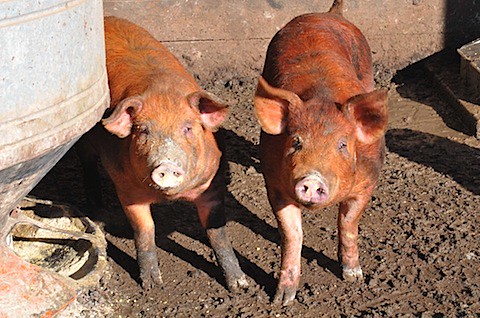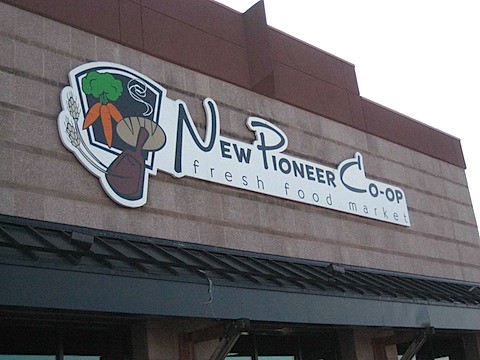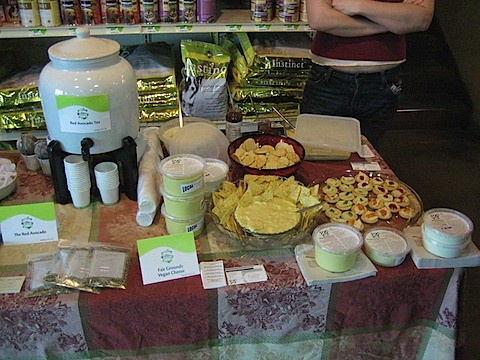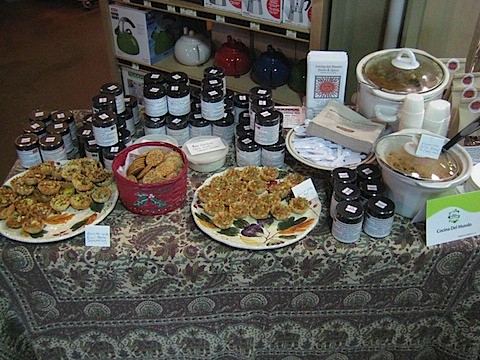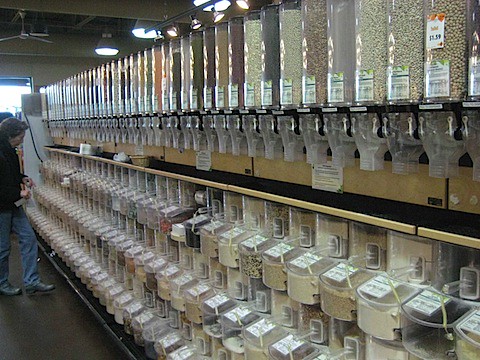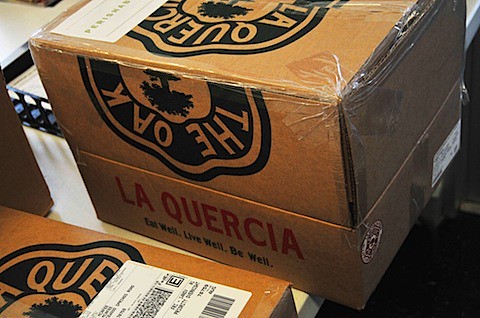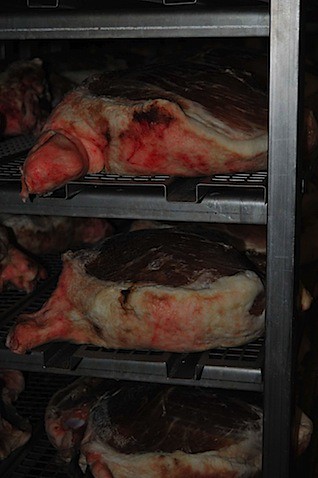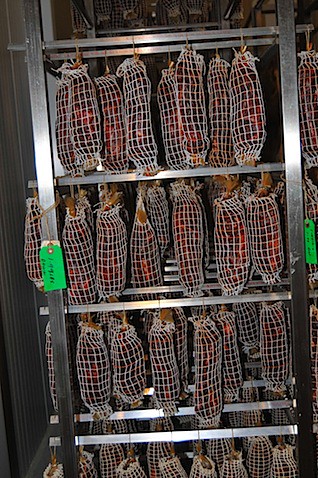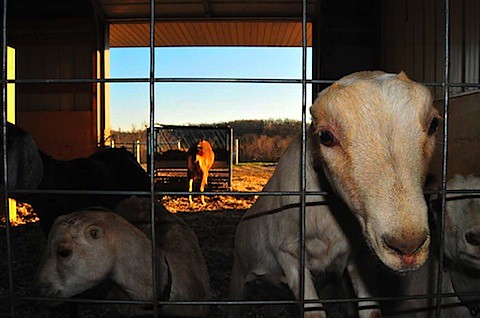
Above: The real reason people read my blog. Pictures of goats (see below for more!)
I knew Lois Reichert and I would get a long when I first emailed her about visiting. In her response, she was sorry to say that she would be in Roccaverano, Italy, as a delegate to the Slow Foods convention. She would then be working with a small Italian goat cheese dairy nearby to learn the secrets to making Italian robbiola cheese. She could not squeeze a visit in before her Italy trip either, because she was going to be at the National Goat Cheese Competition, in Sonoma.
As I read that (rather meaty) first correspondence, I reconsidered my career choices in international business. Being a goat cheese maker sounded pretty good! However, much to the relief of my parents, the jet setting life Lois leads was not enough to tempt me away from my course of study in economics.
However, now that Lois is back in the states, I went to visit her. Well, let me rephrase that: I had scheduled a time to visit with her, but bumped into her one week early at the New Pioneer Co-Ops sample fair- what a small state (see my previous post)! After tasting her cheeses in the in the busy atmosphere, we vowed to talk more during my visit the upcoming Thursday.
When I first stepped into the dairy, I was overwhelmed. It was very different, to say the least: more like a kitchen than a barn. It was all aluminum counters, pyrex beakers and thermometers. In a corner, a rack held bulging vari-colored sacks of something dripping into a bucket. A sink contained slotted containers with a cheese-like substance. Perhaps Mario Batali’s adventures on the Food Network had made me believe that cheese is made in ancient, underground rooms, where aged artisans turn blooming rind cheeses amidst the shrieks of the French mistral.
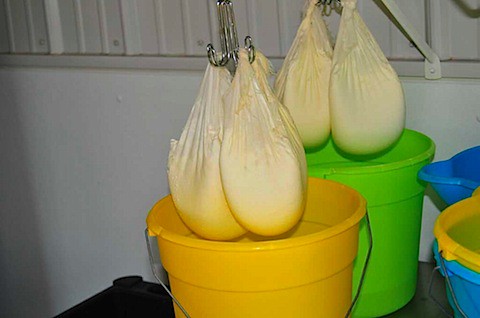
Above: The chevre may not look too appealing while it is hung to separate the whey from the butter cream, it turns into a delicious product.
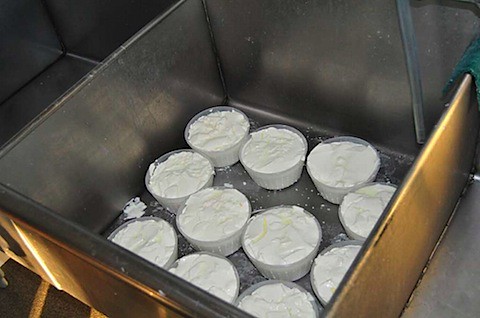
Above: Lois first run of robiola. While she in Turin, Italy for the Slow Food convention she worked with a small robiola producer. I will report back on how hers turns out!
That may sound like criticism; believe me, I mean no such thing. Lois represents, to me, the epitome of what I would like to term the “new” food artisan: clinical and clean, trying new things that are informed, but build upon, the wisdom of the ages, but with a passion for excellence and a perfectionism that comes from having a clear vision of what you want. Both Lois and Herb, of La Quercia Prosciuterria (whom I featured previously), have this vision, and it characterizes these new artisans that are reshaping the culinary landscape of Iowa.
Anyway, enough about that. Let me tell you about Reichert’s Dairy Air!
Lois’ dairy is the first micro-dairy in Iowa. From her herd of approximately 15 Nubian and La Mancha goats, she gets 10 gallons a day-barely enough to satisfy customer demand. However, she is more focused on creating the perfect cheese rather than making large amounts of a mediocre product. Her philosophy of quality over quantity expresses itself in every detail of her operation, and it springs from her passion for her goats and cheese. For example, her goats, produce very little milk, but what little they do produce is of the best quality, with plenty of the delicious butter cream that makes good chevre- the main product of Lois’ dairy. Lois milks them one at a time in a very tidy and clean milking parlor- a necessity in the cold Iowa winters! The small yield of high quality milk provides her with the optimal starting point to produce some of the finest chevre I have ever tasted. She is also a perfectionist and adventurer: while we talked, I was amazed by the amount of uses and things she had tried, from new chevre flavorings to whole different cheeses (such as blooming rind, brie style cheeses) and yogurts.

Above: The two goats on the right (brown, without big ears) are Nubians. The one on the left, with the larger ears, is a La Mancha. Now you can impress people at parties with your knowledge of goats!
While I was there, I tasted her plain, cranberry walnut and roasted red pepper chevre’s, as well as a feta. They were all delicious, and dare I say it, the prime exemplars of what chevre should taste like. They had the creamy texture and taste, with a pronounced mineral flavor that lacked the “goaty” taste that drives many away from chevre. The flavored chevre’s show insight into Lois’ impeccable sense of taste as a chef, not just as a cheesemaker. The cranberry walnut tasted, first and foremost of the cheese, and then the chevre taste is complemented, not overpowered, by the taste of walnuts and cranberries. The roasted red pepper, again, serves as an enhancement to the natural purity and deliciousness of the cheese. Her feta though, really was a showstopper. It was salty, with that delectable mineral finish that I always can detect store bought cheeses striving to imitate and then failing at. Alice Waters, a shared idol of Lois and myself, would be completely unsurprised by Lois’ results: Lois’ “secret”, if you can call it that, is simple, old fashioned trial and error, combined with the freshest and highest quality ingredients. All this is motivated by one thing: love of her goats, their milk, and the cheese. I realized this vividly when we stepped outside into the chilly breath of a Iowa winter in the barn.
Her love of goats was instantly obvious: they were more like dogs in their personality than farm animals. The Nubians pushed their heads up to be patted, and they flocked to Lois with obvious affection. I could tell immediately that was why she makes her cheeses.
And her love of chevre and her goats have not gone un-rewarded or un-recognized. At the extremely competitive National Goat Cheese competition in Sonoma, Lois took home 2nd in the unflavored feta category, 2nd in the unflavored chevre category, and first in the flavored chevre category. After tasting the cheeses, I am unsurprised by her results, simply happy that the rest of the world recognizes the superb work Lois is doing.
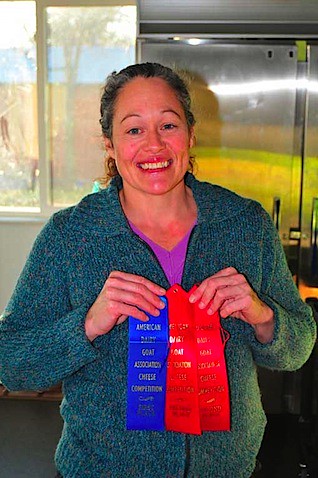
Above: Lois proudly shows her three ribbons (two second place, one first place!) from the highly competitive Sonoma goat cheese competition.
Artisan chefs like Lois are reshaping how the world should think about Iowa. They are tapping into Iowa rich natural resources to make products that are truly world class, and they are doing so with a modesty and perfectionism that is unmistakably Midwestern. I don’t exaggerate when I say that Lois should be a model to anyone considering making any product, culinary or otherwise.
